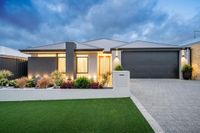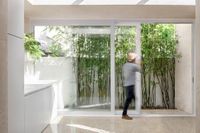In recent years, the concept of mindfulness has found its way into home design, with a growing trend towards creating dedicated spaces for reflection and relaxation. This shift reflects a broader societal recognition of the importance of mental well-being in our daily lives. As people seek to carve out moments of peace amidst the chaos of modern living, architects and designers are stepping up to meet this demand.
Melbourne-based architect Michael Roper, the director of Architecture Architecture, has been at the forefront of this movement. His latest project, dubbed "Sunday," exemplifies the trend of designing homes with spaces that cater to both comfort and contemplation. Located in Fitzroy, a suburb in Melbourne's inner north, this home features a diversity of areas where occupants can find solace. Roper describes it as a place that offers "a chequerboard of spatial conditions"—a blend of social and private spaces that cater to various needs.
One of the standout features of the Sunday home is its calming central courtyard, designed as a garden oasis. This space not only provides a serene environment for residents to pause and breathe but also serves as a clever solution for harnessing natural light. Roper notes that the integration of indoor and outdoor elements plays a crucial role in creating a harmonious living environment.
Another key player in the mindfulness home design trend is Melanie Beynon, the founder and director of her namesake design practice. Beynon has been commissioned to create both commercial and residential spaces that prioritize tranquility. One of her notable projects is the Mirosuna meditation studio in Melbourne. This studio is designed with acoustics in mind, ensuring that external noise is minimized while fostering an atmosphere conducive to relaxation. Beynon explains, "It’s about drawing down on the five senses, thinking about the elements and using the right materials." Water features, for instance, are incorporated to add movement and sound, enhancing the overall experience.
Sally Kellett, a meditation teacher and the founder of Mirosuna, emphasizes the importance of the studio's purpose-built nature. She encourages clients to replicate the studio's calming setup in their own homes. Beynon herself has created a multi-purpose space in her home in Windsor, Melbourne, which, while not exclusively dedicated to mindfulness, can easily transform to accommodate various activities. This space features concrete floors, hand-rendered micro-cement walls, and expansive picture windows, allowing for both relaxation and reflection.
To further enhance the experience of mindfulness at home, Ella Pike, co-founder and coach at The Breath Haus, highlights the significance of having the right environment for breathwork practice. She emphasizes that feeling safe and supported in one's space is crucial for fully surrendering to the experience. "It’s important to let go of the idea that breathwork is complicated," Pike states, advocating for simplicity and accessibility in mindfulness practices.
As the trend of designing mindful spaces continues to gain traction, it's clear that the intersection of architecture and wellness is becoming increasingly relevant. Homeowners are not just looking for aesthetic appeal; they are seeking environments that nurture their mental health and encourage a slower pace of life. The emphasis on creating spaces for mindfulness reflects a broader cultural shift towards prioritizing well-being in our everyday lives.
This trend is not limited to individual homes but extends to community planning as well. Recent research by Mirvac, a leading property development company, highlights key trends and must-haves for new homes in 2025. Their bi-annual survey of over 2,000 Australians reveals a growing preference for walkability and hyperlocal amenities. Respondents indicated that they want essential facilities—such as parks, shopping, and dining—within walking distance, reinforcing the desire for community-oriented living.
Public transport emerged as a top priority for many, with 50 percent of respondents expressing a preference for all-electric homes. This aligns with a global movement towards sustainability, as 63 percent of participants reported having some form of sustainability feature in their current homes. Solar panels were the most popular choice, with many respondents willing to pay extra for their installation. The research underscores a significant shift in consumer sentiment towards sustainable living practices.
As the demand for mindful spaces and sustainable living continues to rise, architects and designers are adapting to these changing preferences. The integration of smart home technology is also becoming increasingly relevant, with homeowners looking for features that enhance comfort and security. Recreational amenities, such as swimming pools and community gardens, are also in high demand, reflecting a desire for shared spaces that foster connection and well-being.
In summary, the trend of designing homes with dedicated mindfulness spaces is a response to the growing recognition of the importance of mental well-being. As architects and designers create environments that promote relaxation and reflection, homeowners are increasingly prioritizing their mental health in the spaces they inhabit. The intersection of architecture, wellness, and sustainability is shaping the future of home design, creating a holistic approach to living that nurtures both body and mind.
As we move further into 2025, it will be fascinating to see how these trends evolve and what new innovations emerge in the realm of mindful and sustainable living.







